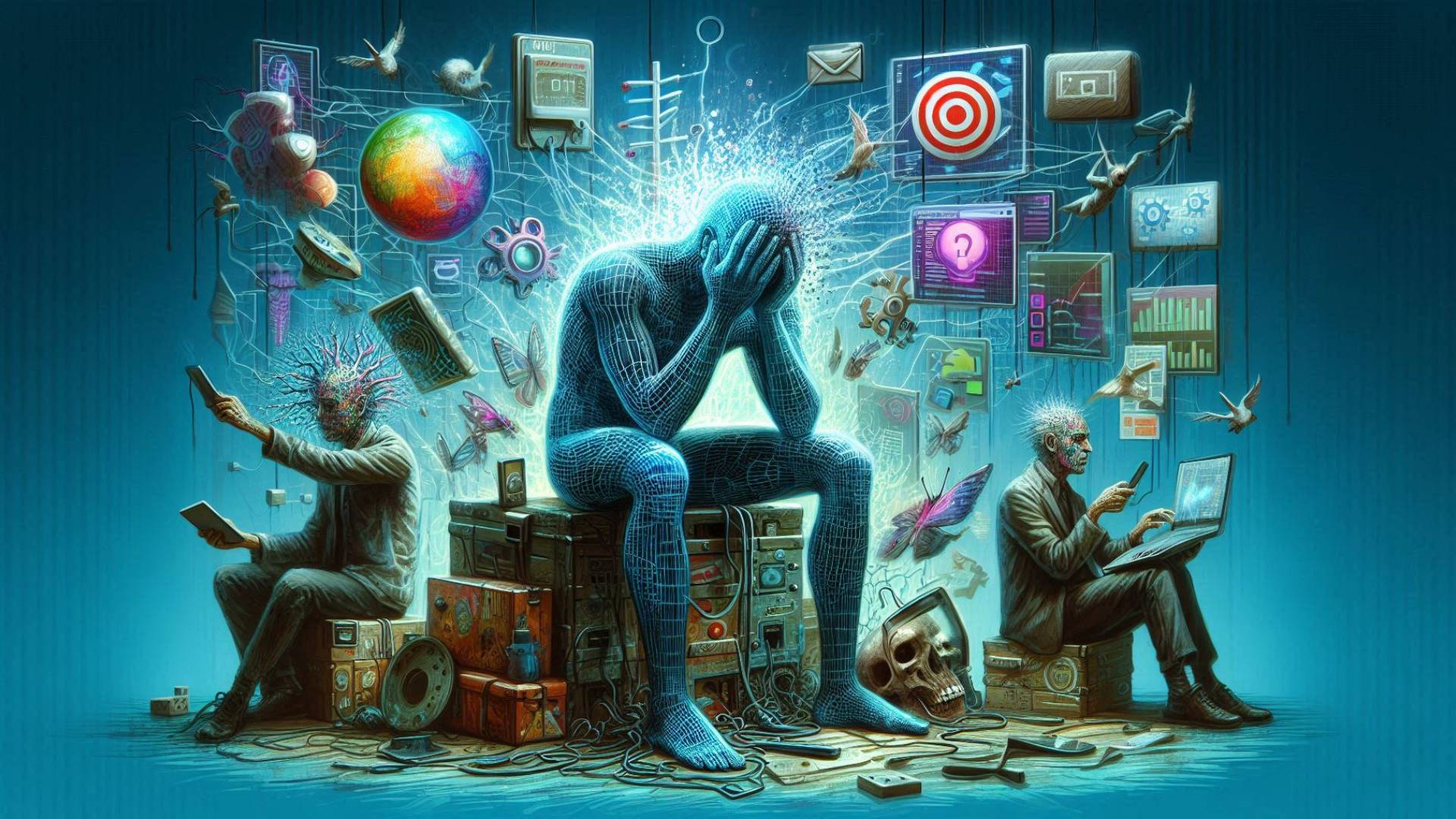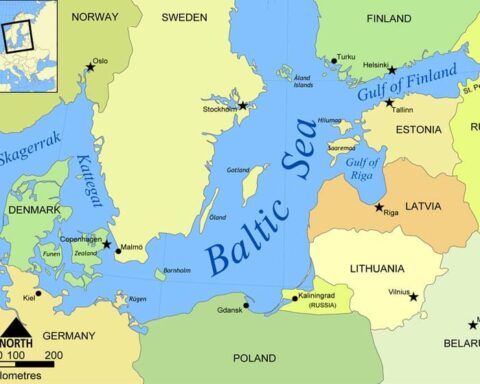an Urgent Mission for the Left Movements
The struggle for socialist liberation in the 21st century cannot rely on the tools of the previous century. In a time when algorithms dominate, public consciousness is managed through artificial intelligence, and policies and visions are shaped by big data, the left faces a fundamental question: how can movements still organized with traditional logic and outdated field tools confront a digitally advanced capitalism that has reached unprecedented technological levels?
This text is not only a call for the development of tools, but also a call for a shift in organizational and intellectual awareness toward a deeper understanding of the digital battlefield. This is not simply a gap in technical skills. It is a gap in realizing that the digital sphere is no longer neutral. It is a class-based space by every standard. Capitalism controls, programs, organizes, and subjugates. The left, in contrast, suffers from a decline in its presence, a narrowing scope of influence, and in some cases, a complete lack of a clear digital vision.
This entry opens the door to a deeper discussion about the central role of technology in both domination and liberation. It argues that overcoming the digital divide is no longer an organizational luxury but a necessity for the left’s survival. The battle is no longer just on the ground. It is also taking place within algorithms, awareness, data, and digital networks. This article serves as an initial contribution to a critical socialist vision of artificial intelligence from the perspective of the digital left. It considers both how AI deepens capitalist dominance and how it might be explored as a tool for liberation within a socialist framework. This is not just a theoretical exercise. It is a practical-theoretical attempt to spark a leftist conversation on artificial intelligence and to offer realistic alternatives for freeing technology from the control of powerful states and monopolistic corporations. At the very least, it is a proposal to define and regulate its role in the short term, and to guide it in the service of social justice, equality, and democracy.
The struggle over technology is not a fight against science itself but against the monopolization of science by dominant forces that use it to enhance profit and reinforce control. Artificial intelligence should not be seen as a threat in itself, but as a new battlefield shaped by the balance of social, political, economic, and intellectual forces.
In times of crisis, capitalism reinvents and restructures itself using advanced scientific and technological tools. These enable it to overcome challenges without changing its exploitative core. For instance, during the global financial crisis of 2008, capitalist governments used science, technology, and public funds to rescue the economy, allowing the financial system to continue while transferring the costs of failure to the working class. Similarly, during the COVID-19 pandemic in 2020, many on the left believed capitalism was entering a terminal crisis. Yet capitalism managed to survive once again. Governments and large corporations accelerated their use of automation, artificial intelligence, and remote work, allowing the capitalist economy to persist using new methods despite global lockdowns. However, this shift led to a decrease in reliance on human labor, increased corporate profits, and widespread job insecurity or layoffs.
These developments show how capitalism uses science and technology as tools to overcome crises and restructure itself for survival. Capitalism even borrows and employs certain Marxist or socialist concepts, such as state intervention or support for marginalized groups, but only temporarily and only to stabilize the system. Once the crisis ends, such measures are rolled back and exploitation resumes with even more advanced tools.
Given the challenges of the digital age, the left must learn from this flexibility and scientific advancement. It should not abandon its liberatory values, but instead reshape and modernize its discourse, tools, and strategies in a scientific way to keep pace with rapid change. This includes using modern scientific tools not only to analyze social, economic, and political issues accurately but also to create a realistic and evidence-based political discourse and to develop flexible organizational mechanisms that expand the left’s base. This is especially important to attract younger generations who have grown up in a technology-dominated world.
Utilizing scientific tools and ideas developed by capitalism for crisis management does not mean embracing capitalist values. It is a strategic use of these tools in the service of social justice, equality, and the reduction of class disparities. It is a step toward building a more humane and just socialist system.
The first industrial revolution transformed material production through the use of machines and steam power, driving industrial growth and capitalist exploitation of workers in factories. The second revolution expanded this model with electricity and assembly lines, further concentrating capital and control in bourgeois hands. The third industrial revolution, based on computing and communications, introduced a new stage of labor division through computers and digital automation, facilitating human communication and breaking media monopolies. Now, the digital revolution—or what is called the fourth industrial revolution—is creating a new leap that reshapes knowledge and power structures and redefines social relations, making it a key arena for class struggle.
In this digital era, knowledge, data, and information have become critical production resources. They are being exploited to reinforce capitalist control. This makes the ownership of technology and control over information flows vital factors in modern class conflict. The means of production are no longer limited to factories, farms, and offices. Data and algorithms are now central to reproducing capitalist dominance invisibly—by controlling public opinion and guiding social behavior.
Despite these sweeping changes, most leftist organizations remain digitally behind. This puts them at a disadvantage in the face of capitalism’s sophisticated digital machinery. The problem is not only the lack of tools, but also the lack of a clear political vision for using technology in the service of struggle. The digital divide facing the left is not just about access to resources. It reflects a deeper failure to understand that digital transformation is now an existential condition for sustaining and developing socialist struggle. Without digital tools, the left resembles an “ant” facing an “elephant.” Capitalism now possesses an unparalleled ability to dominate the digital sphere, shape public consciousness, direct information, and suppress any alternative movement. If this gap remains, the left will continue to face digital exclusion and restriction, limiting its capacity to organize, influence, and present its humanist alternatives.
The left is currently losing part of the battle because it still treats technology as a secondary concern, rather than as a primary front in the class struggle. But this battle is not over. Victory will not come from slogans but from turning vision into practical programs, based on the conscious and effective use of technology and on offering viable alternatives to capitalist digital dominance. The left must not remain in a defensive position. It must actively engage in the technological struggle with a clear strategy—one where it is not a passive user of technology but a force reshaping its future.
When the left succeeds in integrating technology into its emancipatory project, it can move from digital marginalization to becoming a dynamic organizing force, able to adapt to the digital age. It can develop new tools and strategies to confront capitalist domination with greater balance and possibly reclaim the initiative in future struggles.
Nevertheless, no matter how advanced technology becomes, it can never replace conscious human organization. The real strength of any progressive leftist movement does not lie solely in its tools—important as they are—but in its organized human force capable of using those tools to achieve its goals. Artificial intelligence and technology can enhance the capacities for struggle, organization, and mobilization, but they can never replace solidarity, political organization, or grassroots action. These remain the primary drivers of real, lasting change. Digital tools should complement—not replace—direct political struggle.
As the left, we aim to present emancipatory alternatives in various areas of society: economics, justice, rights, equality, and socialist transformation. Yet, we still lack a comprehensive and clear digital leftist vision to counter capitalist technological domination, despite the serious role this domination plays in reinforcing capitalist ideology for future generations.
The key dialectical lesson is that technology is not a neutral tool. It is a class battleground that must be approached with scientific and strategic awareness. Science has never been purely objective progress. It has always depended on who controls it, how it is used, and for what purpose. The problem is not with artificial intelligence itself, but with its monopolization by capitalist powers and its redeployment to deepen class conflict.
Therefore, the left cannot stop at criticizing technology or how it is used. It must develop its own progressive and leftist alternatives. It must propose new frameworks for how technology can function within democratic, transparent systems under social oversight. Technology should serve humanistic goals, not just profit and exploitation.
This struggle is not just about understanding the structure of digital dominance. It is about penetrating the digital fortress of capitalism, not standing at its gates and shouting from outside. Just as Marx and Engels turned the sciences of their time into tools against capitalism, the left today must become an active force in this arena—not a passive observer or submissive user within the digital capitalist system.
*This text is the introduction to the book “Capitalist Artificial Intelligence: Challenges for the Left and Possible Alternatives,” available for free at:
https://rezgar.com/books/i.asp?bid=4
This article has been translated from Arabic: https://www.ahewar.org/debat/show.art.asp?aid=867851






